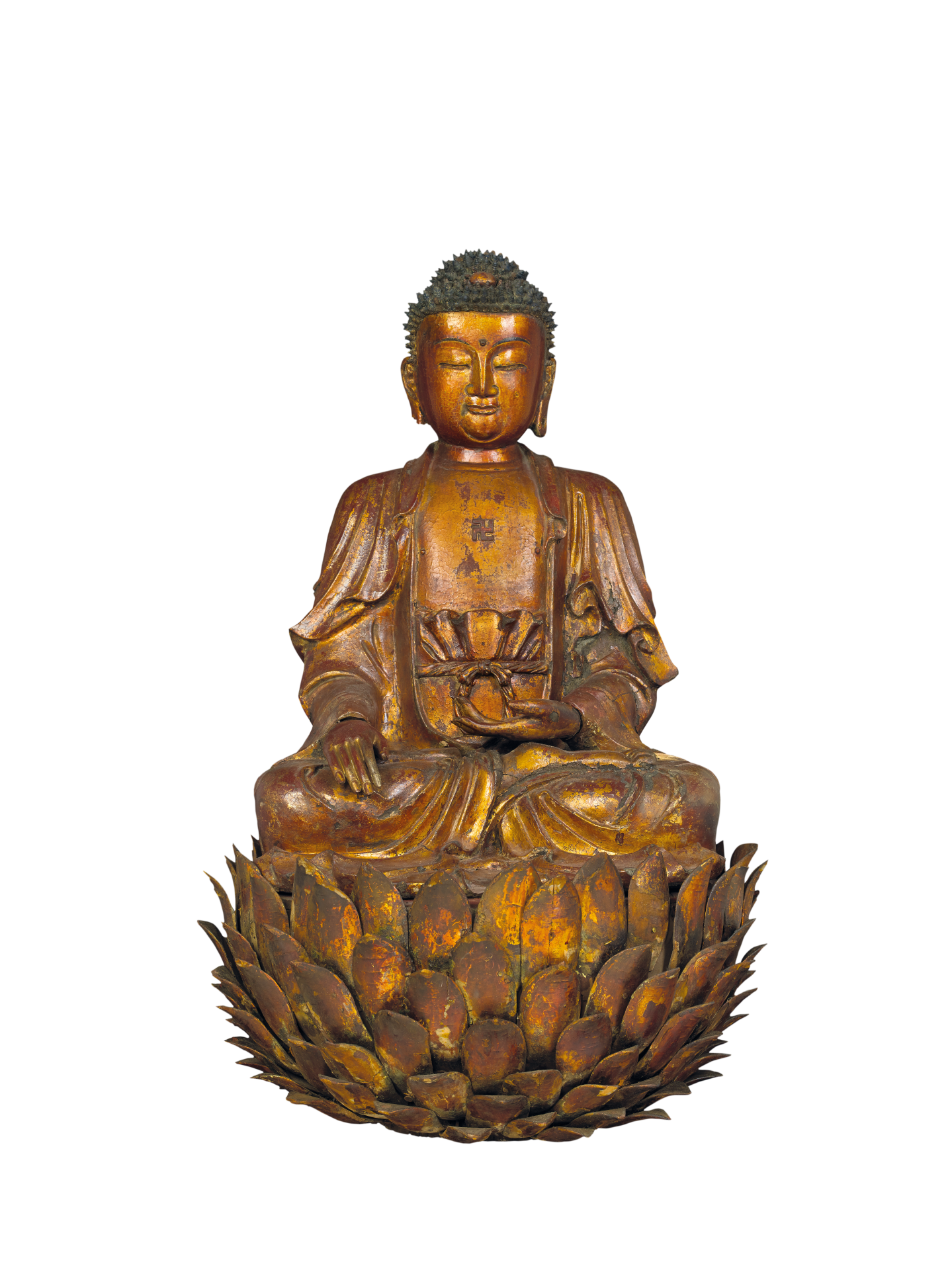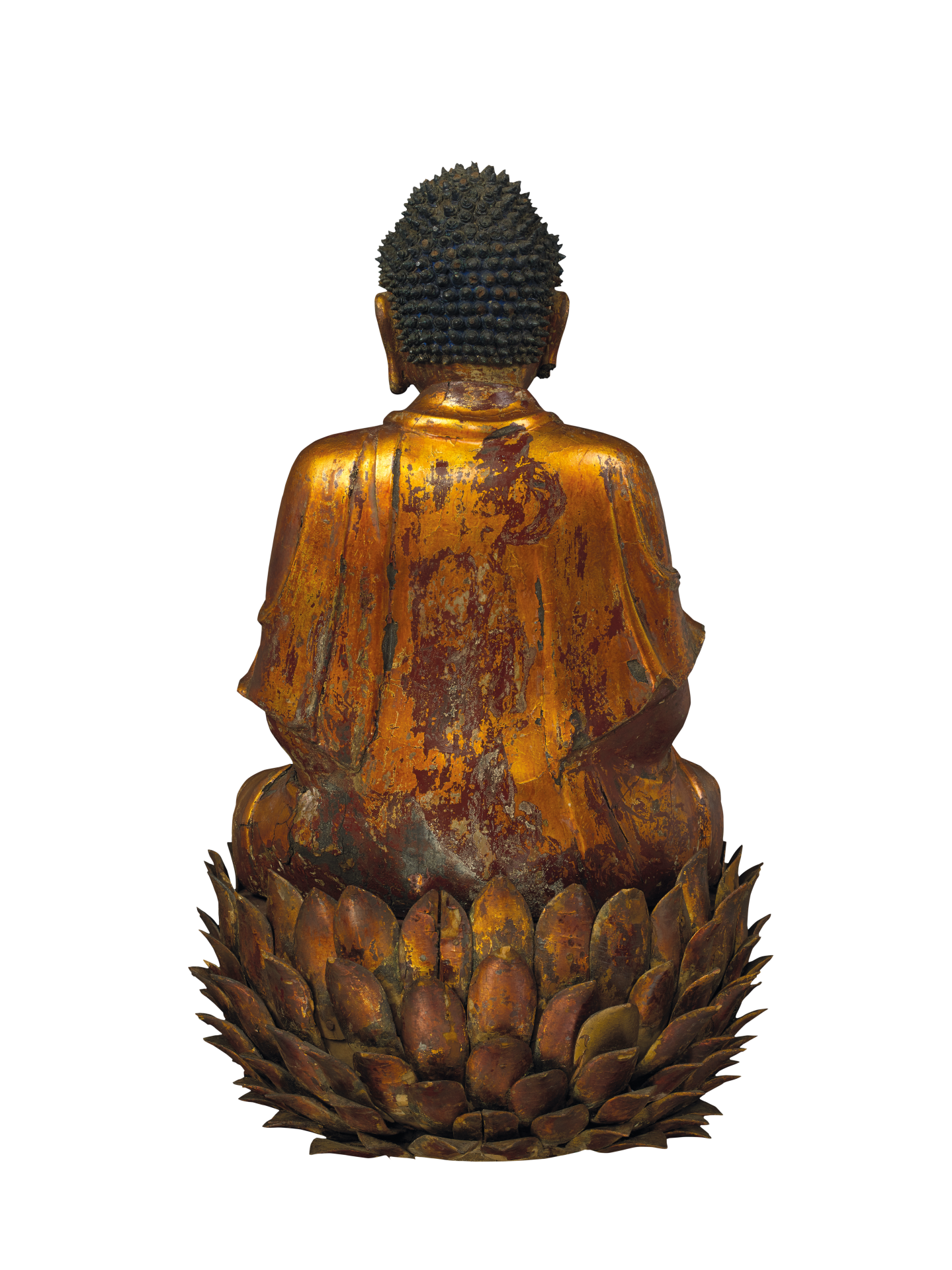Seated Śākyamuni Buddha
This statue is made up of two detachable parts: the seated Buddha and the base, involving different crafting techniques. The seated Buddha is lacquered with textile core (jiazhu), while the base is gold-painted wood. Jiazhu is an indigenous free-standing sculpturing technique invented in China around the beginning of the Common Era. Jiazhu lacquer is also known as ‘dry-lacquer’ or ‘bodiless lacquer’.
To produce such a work, layers of linen are pasted onto a clay mould and raw lacquer is then applied to the surface to give a laminated effect. Finally the clay mould is removed to result in a ‘bodiless’ piece. Since jiazhu lacquer is light and durable apart from highly plastic, the technique was often used in producing Buddhist statuary after Buddhism was introduced to China. The Tang dynasty (618-907 CE) saw large numbers of jiazhu statuary being made and offered to monasteries. The technique declined from the Song dynasty (960-1279) onward. Jiazhu sculptures were considered particularly rare during the Ming dynasty (1368-1644).
This image is identifiable as Śākyamuni Buddha by the ‘earth-touching gesture’ (bhūmisparśamudrā) of the right hand and the ‘meditation gesture’ of the left hand. He has an oblong face, snail-like curls of small conical shape, delicate and well-proportioned facial features, gently undulating skin, an ūrṇā between the eyebrows, downcast eyes, and a serene and contemplative expression. He wears a kāṣāya with collars down both shoulders, exposing a flat chest bearing a 卍 sign. He is seated with legs locked in ‘lotus posture’ (padmāsana) on a lotus pedestal. The entire surface of the statue is coated with gold paint, and the lacquer layers are well-preserved. The pedestal is in the form of a multilayer upward-facing lotus. The petals are painted gold, while the upper surface of the pedestal is lacquered red. The petals are long and thin, with each tip pointing outward. The multilayer design suggests a full-blown lotus.

